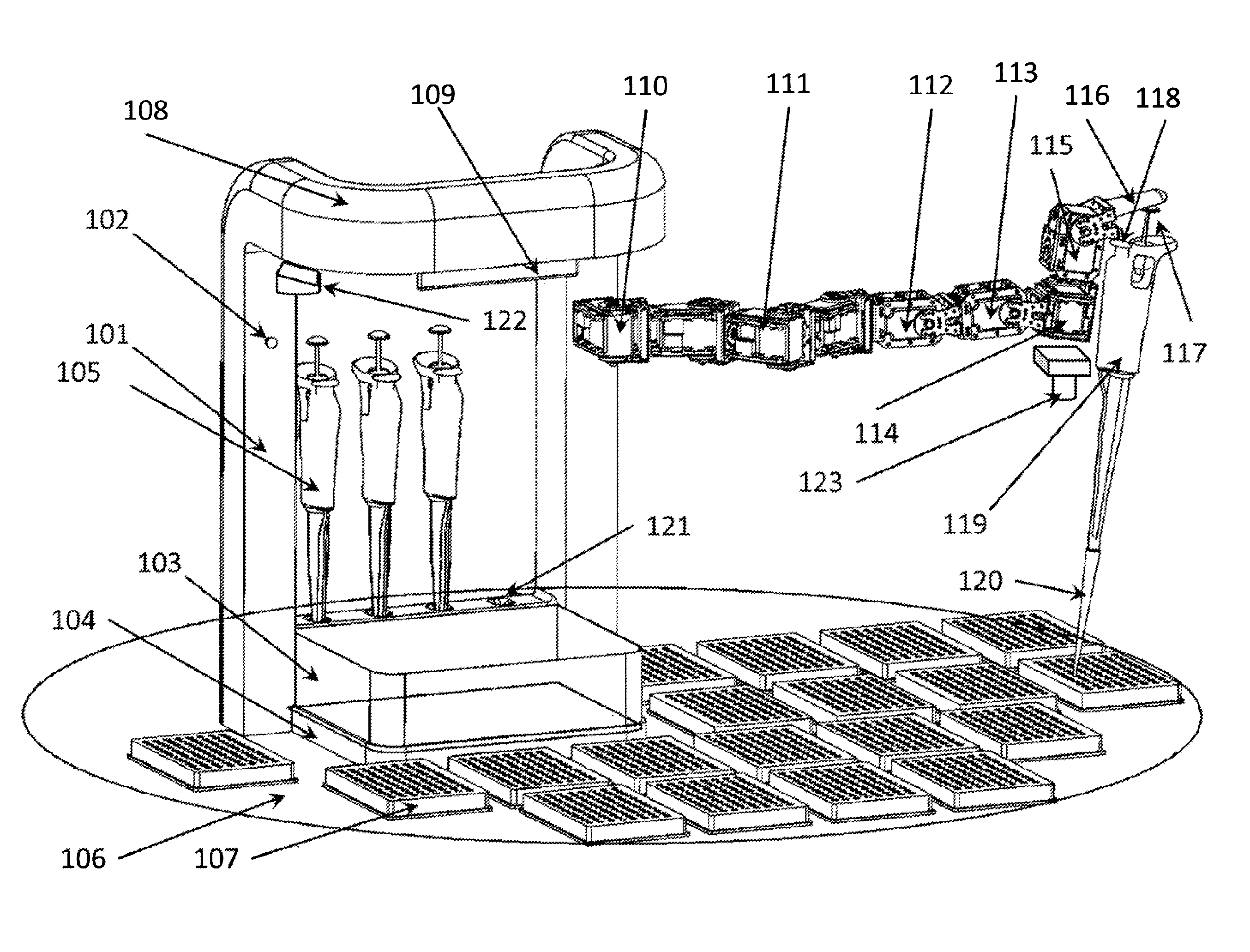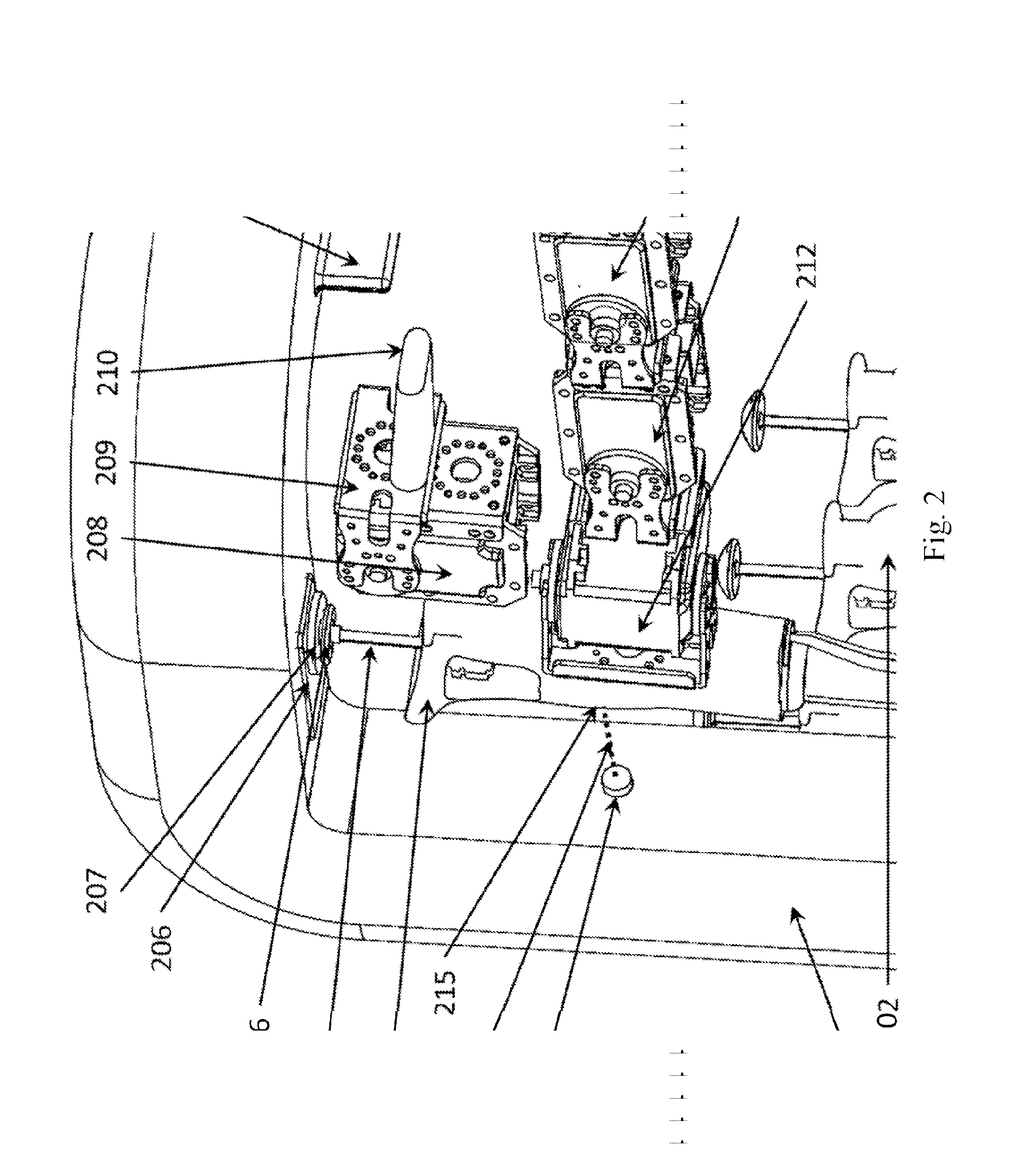Devices and methods for programmable manipulation of pipettes
a pipette and programmable technology, applied in the field of automatic chemical, biological and biochemical processes or reactions, can solve the problems of inability to generate precise biological processes, inability to transport and manufacture systems, and inability to accurately extract buffy coat from tubes by manual pipetting, etc., to achieve small footprint, reduce final cost, and save space
- Summary
- Abstract
- Description
- Claims
- Application Information
AI Technical Summary
Benefits of technology
Problems solved by technology
Method used
Image
Examples
Embodiment Construction
[0064]The present invention relates to the manipulation of pipettes, as well as a number of its applications. For the purpose of illustration, the drawings as well as the description will generally refer to the apparatus addressing this solution as a liquid handling android. However, the means disclosed in this invention are equally applicable to more general embodiments in the field of liquid handling.
General Description of a Liquid Handling Android
[0065]The global structure of a liquid handling android comprises few elements, all of which have a given functional role in the architecture. In essence, a liquid handling android operates above a certain deck, that could include or not the android base itself The deck could either be a physical part, soft or rigid, either a virtual region without delimitations—for example belonging to a laboratory bench. The deck could also be the physical assembly of smaller units, called blocks, that combine together in order to form a larger operati...
PUM
 Login to View More
Login to View More Abstract
Description
Claims
Application Information
 Login to View More
Login to View More - R&D
- Intellectual Property
- Life Sciences
- Materials
- Tech Scout
- Unparalleled Data Quality
- Higher Quality Content
- 60% Fewer Hallucinations
Browse by: Latest US Patents, China's latest patents, Technical Efficacy Thesaurus, Application Domain, Technology Topic, Popular Technical Reports.
© 2025 PatSnap. All rights reserved.Legal|Privacy policy|Modern Slavery Act Transparency Statement|Sitemap|About US| Contact US: help@patsnap.com



